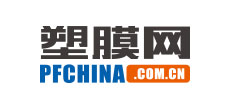

| 塑料薄膜: BOPP | CPP | BOPET | BOPA | 胶带产业: 胶带膜 | 丙烯酸及酯| VIP 专区 | 彩印专区: 新闻 | 技术 | 分析 | 行情 | 政策 | 国际频道 |
| 塑料原料: PE | EVA | PP | 粉料 | 溶剂油墨: 醇类 | 芳烃 | 酮类 | 醋酸及酯 | 软包基材: 双拉 | 流延 | 镀铝 | 吹膜 | 阻隔 | 原油专区 |
UK Ever since 2010, when commodity bi-oriented polyester (BOPET) film producers high levels of profitability, they have seen their position weaken. New film extrusion capacity linked to a slowdown in demand has forced film pricing and margins to rock bottom levels. As a result, global film producers have had to take a long hard look at their business models.
However, these same market factors have come as welcome news to commodity BOPET film buyers, helping them to enjoy a sustained period of price stability and a wider choice of competitive film suppliers.
For many the question is, “Will the current ‘buyer’s market’ continue?” The simple answer from PCI Films Consulting’s latest analysis of the global market appears to be yes, at least in the short term. At a global level the world BOPET film market is currently over-supplied, largely as a result of the frenzy of new investment in film extrusion capacity in China. In most other regional markets capacity increases have been more balanced and aligned to increases in demand. Regional demand continues to grow, but rates have slowed and the supply shortages of 2010, which were the main cause of higher prices, are unlikely to be repeated anytime soon. The over-supply situation in PTA, a film feedstock, is also expected to dampen any upward pressure on film pricing.
Commenting on the state of the industry, PCI’s Managing Director, Simon King, notes that, “While the BOPET film industry has become more global in recent years, regional supplier/customer relationships are still very important. The over-capacity in China has had little impact on supply balances in Europe and North America because customer’s demands on quality and lead times are such that domestic suppliers, even at marginally higher prices, are still preferred”.